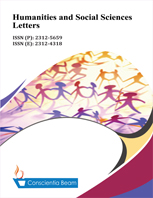The effect of healthy food promotion through lunch boxes on the knowledge, attitudes and habits of elementary school students
DOI:
https://doi.org/10.18488/73.v12i3.3811Abstract
This study aims at investigating the implementation of the stunting prevention programme called Delicious, Nutritious and Low-Cost School Lunch (DNLCSL) for elementary school students in Bandung City, West Java Province, Indonesia. This research employed a mixed-methods design combining quantitative and qualitative approaches. Quantitative data was collected through surveys and qualitative data was collected through in-depth interviews with leaders in the education and culture offices, health department, public health centre staff, elementary school principals, teachers, students, parents and canteen staff. The research findings revealed that the stunting prevention program DNLCSL was an innovative nutrition campaign. The DNLCSL Programme was implemented as an alternative to nutrition education to help elementary school students consume nutritious and well-balanced food. The planning and organizing phases have been completed but the implementation and monitoring processes should be improved. It was found that there were changes concerning lunch boxes and snacking habits in the elementary schools that consistently implemented the program. This research implies that more widespread implementation is needed as the DNLCSL programme can improve students' knowledge, attitudes and dietary habits which can indirectly prevent stunting. The involvement of the government, education and health agencies and community collaboration are also needed to keep the programme sustainable.

